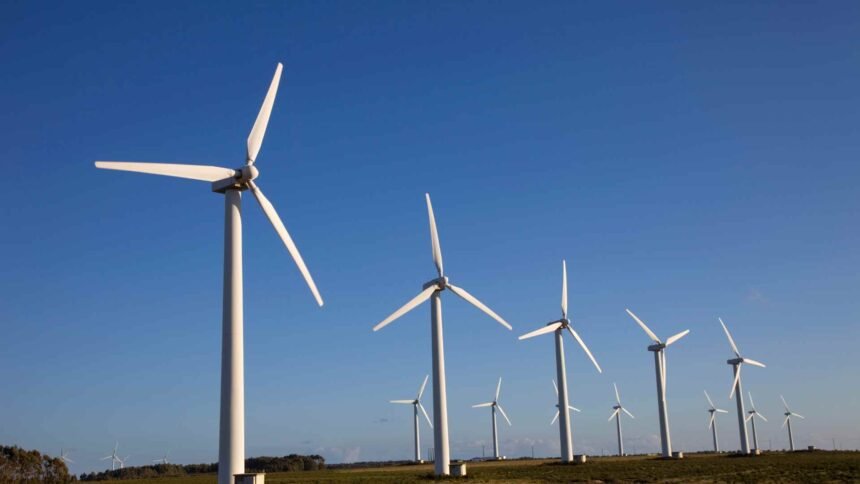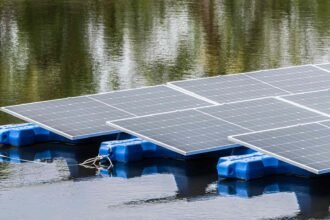Trump Government Blocks US Wind Project
The renewable energy sector faces a major setback as the Trump administration halts construction on a key offshore wind project. Danish company Orsted, a leader in wind farm development, now sees its ambitious capital-raising plan in jeopardy. The U.S. Bureau of Ocean Energy Management (BOEM) issued a stop-work order late on Friday for the Revolution Wind project off Rhode Island’s coast. This decision comes at a critical time for Orsted, which relies on U.S. projects to fuel its growth amid global challenges in the industry.
Orsted announced earlier this month a rights issue to raise 60 billion Danish crowns, equivalent to about $9.42 billion. The funds aim to support ongoing developments, including the Revolution Wind and another project called Sunrise Wind. But with the halt, analysts warn that investor confidence could crumble, pushing Orsted’s share prices even lower. The company, already grappling with supply chain issues and rising costs, must now navigate this political storm.
The Blockage Decision
The Trump administration acted swiftly to suspend work on Revolution Wind, a 704-megawatt project that promises to power hundreds of thousands of homes in Rhode Island and Connecticut. BOEM’s order cites concerns over national security interests, though details remain vague. Matthew Giacona, acting director of BOEM, instructed Orsted to cease all activities immediately until the review is completed.
This move aligns with President Donald Trump’s long-standing criticism of wind energy. He has called wind farms “ugly,” “unreliable,” and “expensive” on multiple occasions. On his first day back in office in January 2025, Trump suspended new offshore wind leasing for environmental and economic reviews. The Revolution Wind halt marks the latest in a series of actions that have chilled the industry, including earlier stops on projects like Equinor’s Empire Wind.
What stings most is the project’s progress: Orsted reports it as 80% complete, with all foundations installed and 45 out of 65 turbines already in place. The $1.5 billion venture, approved under the previous Biden administration, holds 20-year power purchase agreements to supply 400 megawatts to Rhode Island and the rest to Connecticut. Orsted aimed to finish by next year, but now everything grinds to a halt.
Background on Orsted’s Plans
Orsted, formerly known as Dong Energy, transformed from a fossil fuel giant into the world’s largest offshore wind developer. The Danish state owns 50.1% of the company, underscoring its strategic importance in Europe’s green transition. In recent years, Orsted expanded aggressively into the U.S. market, betting on supportive policies under Biden.
However, challenges mounted. Soaring inflation, supply chain disruptions, and shifting subsidies led Orsted to cancel two New Jersey projects and book hefty impairments. To fund remaining ventures like Sunrise Wind—set to be the largest U.S. offshore farm—Orsted planned to sell stakes to partners. Trump’s policies scared off potential investors, forcing the company to turn to a massive rights issue instead.
On August 11, 2025, Orsted unveiled the $9.42 billion plan, with two-thirds earmarked for Sunrise Wind construction. CEO Rasmus Errboe described the situation as “extraordinary,” blaming U.S. market developments on top of macroeconomic woes. Shares plummeted 31% that day, hitting a record low. The Danish government pledged to maintain its majority stake by subscribing proportionally.
Impact on Orsted
The BOEM order throws Orsted’s finances into turmoil. Analysts like Jacob Pedersen from Sydbank call it a “huge hurdle” for the capital raise. Pedersen, with over 20 years in the field, expressed shock, saying it “tops it all.” Shares, already down 30% since the August 11 announcement, face further pressure when markets open.
Orsted depends on divesting project stakes to recycle capital for new builds. With Revolution Wind stalled, potential revenues vanish, and costs pile up from idle equipment and crews. The company stated it will update investors on the impact but declined further comment. Denmark’s Finance Minister Nicolai Wammen noted he is “naturally following the case closely,” highlighting the national stakes.
In a broader hit, Orsted’s U.S. ambitions suffer. The company has already taken $1.69 billion in impairments on American assets due to delays and policy shifts. If the halt persists, some leases could become worthless, as Pedersen warned.
Broader Industry Implications
This decision ripples across the offshore wind sector. Trump’s actions fulfill campaign promises to oil executives, who donated heavily to his bid. The American Clean Power Association opposes the moves, arguing they will raise energy bills in wind-reliant states.
European firms like Equinor, RWE, and Vestas saw share dips earlier this year from similar policies. In contrast, nuclear and fossil fuel stocks rose, aligning with Trump’s push for domestic energy like LNG and nuclear.
Critics argue that the halt wastes billions in investments and delays clean energy goals. Connecticut Attorney General William Tong vowed to explore legal options, warning of higher costs for ratepayers.
Reactions and Future Outlook
Orsted evaluates “all options,” including legal action, to resolve the issue quickly. Industry watchers hope for a reversal, as seen with Equinor’s project earlier this year. But uncertainty looms, with Trump’s administration prioritizing reviews that could drag on.
Democrats blast the decision as politically motivated, mothballing American-made renewable jobs. For Orsted, resilience means cost-cutting and diversification, but the U.S. market’s volatility tests its limits. As Errboe put it, the company and industry face an “extraordinary situation.” Investors watch closely, wondering if wind power’s gusts can weather this storm.









